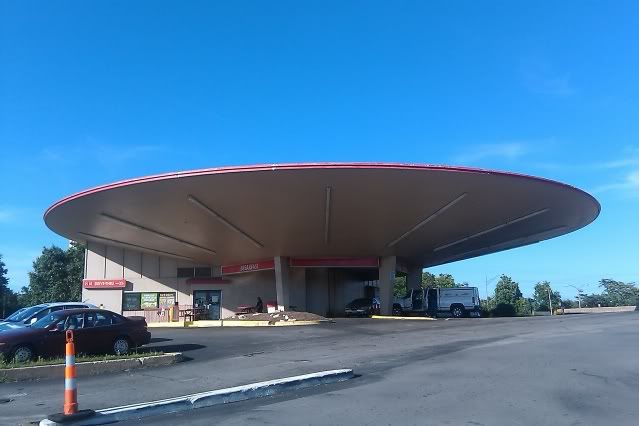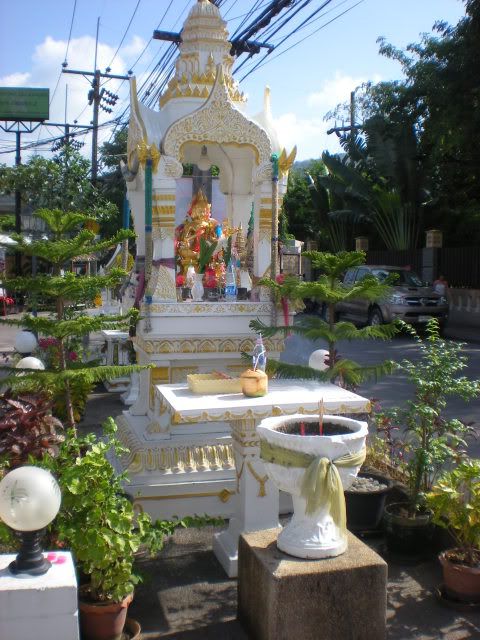As promised, I am back this week to tell you more about
Eastern State Penitentiary in Philadelphia, PA.
Last week I posted pictures with no explanation because I wanted to give you an idea of the scale of the building and how strange it is to wander through this huge, crumbling complex with relatively little company. If there's anything from last week's pictures that you want to know more about, leave a comment and I'll see what I can do to find answers.

Eastern State was the world's first penitentiary, a prison designed for inmates to reflect on their crime and become truly penitent. Its iconic wagon wheel design, which allowed guards to look down each cell block from a central rotunda, was copied by over 300 prisons worldwide. When it was opened in 1829, two of the cell blocks were completed, with each prisoner in a single cell with a single skylight and a door out to their own private exercise yard.

This new system, which came to be called the Pennsylvania System, was based on the principle that criminal behavior is a result of environment and thus was designed so that prisoners were in solitary confinement for the duration of their sentence. Rarely did prisoners ever leave their cell/exercise yard, and if they did, they wore masks so they would never come in contact with other prisoners.


The penitentiary was completed in 1836, with a total of seven cellblocks (1-3 are single-story and 4-7 are two-story) and a capacity of 450 prisoners. Later, four more cell blocks, without exercise yards, are added to the space between existing cell blocks. Over the years, two three-story cell blocks were also wedged in.


By 1913, the Pennsylvania System of solitary confinement is officially abandoned at Eastern State in favor of the New York System (also known as the Auburn System) which held that inmates should work together in groups in enforced silence. I'm sure the fact that they needed more space was a prime reason for the switch.

I have to skip a lot of notable moments in history due to space constraints, but there is a
very informative timeline on the website. Eastern State closed in 1971. When it was built, it was more than a mile away from Philadelphia, but in the course of 140 years the city spread out, and now the prison seems like it's practically in the middle of town. We walked down 22nd Street from the Mutter Museum and it was certainly an odd sight to see this fortress looming in the distance.


After its closure, Eastern State was abandoned and became a virtual urban jungle. To keep a long story relatively short, there was much debate over what to do with the property, including tearing it down and building condos, a story familiar to all of us who reside in historic cities. A task force of architects, historians, and preservationists mounted a successful campaign to stabilize the building and preserve it as a historic landmark, using grants from the Pew Charitable Trusts and William Penn Foundation, and funds from their famous Halloween fundraisers. In 2001, the Eastern State Penitentiary Historic Site nonprofit assumed the title from the City of Pennsylvania.

Eastern State Penitentiary was used as the mental institution in the move
12 Monkeys, a Southest Asian prison in the movie
Return to Paradise, and
several other movies and music videos. The Voices of Eastern State audio tour is narrated by Steve Buscemi, who discovered the prison when scouting for a movie location. I said last week that I wished that I could include the Steve Buscemi experience, and it turns out I can! You can hear a portion of the audio tour on the website.
Steve Buscemi talks about Eastern State. The audio tour is fantastic. If I remember right, there are about 30 stops on the guided tour, which lasts about 90 minutes, but then there are at least another 20 extra stops you will discover as you wander the grounds that give extra detail about prison life (and the obligatory
ghost mention). You could easily spend the day at Eastern State.


One of the things I thought was really cool was that they have incorporated a series of art installations into the prison grounds. One of them was a surprise, as I was using my camera flash to see inside a lot of these dark cells (which led to 300 pictures to sort). I looked at my screen after snapping one such picture and saw this white cat. It seemed oddly intentional, and yet, that cell was totally dark.

Later, as we were reading signs on the grounds, we discovered that this is an art installation called
The Ghost Cats by Linda Brenner, dedicated to Dan McCloud ("Dan the Cat Man"), who came three times a week for 28 years after the prison closed to feed the stray cats who took up residence in the prison. In the early 90s, the Spayed Club trapped and spayed/neutered the cats, and the colony numbers dwindled until the last of the cats died in 2002 or 2003. There are 36 "ghost cat" sculptures in the installation, but I only saw this one. You can see more, and hear the audio, on the
Eastern State website.

I wish I could talk about all the art installations, but there are quite a few and the others I have pictures of (
Beware the Lily Law and
I Always Wanted to go to Paris, France) really need audio to be properly appreciated. The photo above is from an installation called
On Tour and is the first one that caught my eye, because it is the address of the house where Sharon Tate was murdered (you probably think I'm ever weirder for having recognized the address, but I just read
Helter Skelter
this year.)

Above, Francis recognized "Arbeit Macht Frei" ("work sets you free") as being the sign over the entrance to German concentration camps.
On Tour highlights locations of Dark Tourism, which is defined as "the act of travel to sites that have real or recreated death, suffering or the macabre as their main theme." Kind of gave us pause for spending two hours touring a deserted prison.

One last one: The People's Temple Agricultural Project, informally known as Jonestown, which was the home of Jim Jones' cult in Guyana where 909 Temple members committed suicide in 1978. There are many more of these signs throughout Eastern State.
There are currently five history exhibits and ten artist installations, and looking at
the list, I feel like we only saw a fraction of them. We are thinking about going back in the fall for
Terror Behind the Walls, the Halloween fundraiser I mentioned earlier. I'll be honest, having been there in daylight, the prospect kind of terrifies me, but I'm still eager to go back! Any excuse to write another post about the spooky side of Eastern State!











































